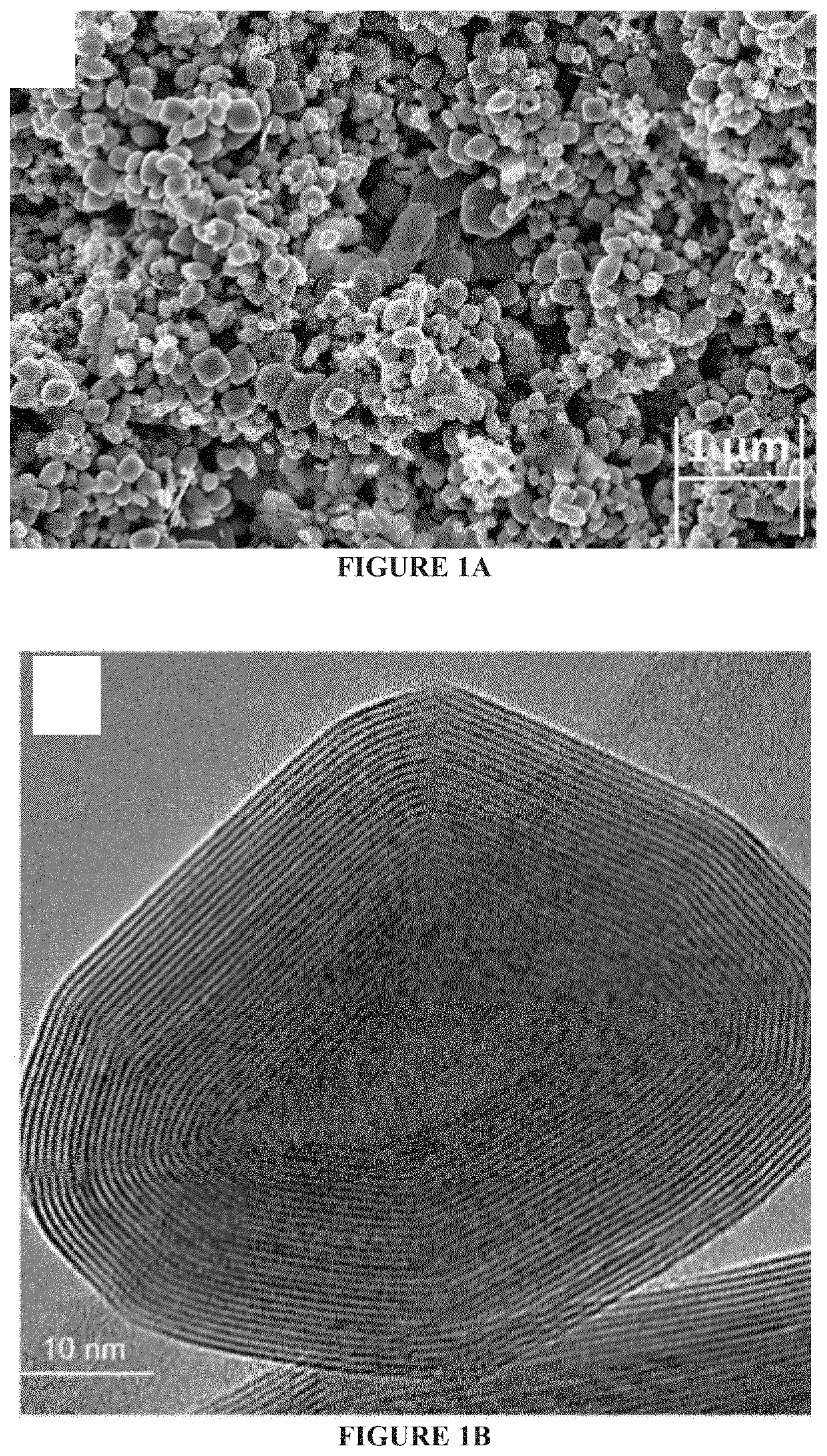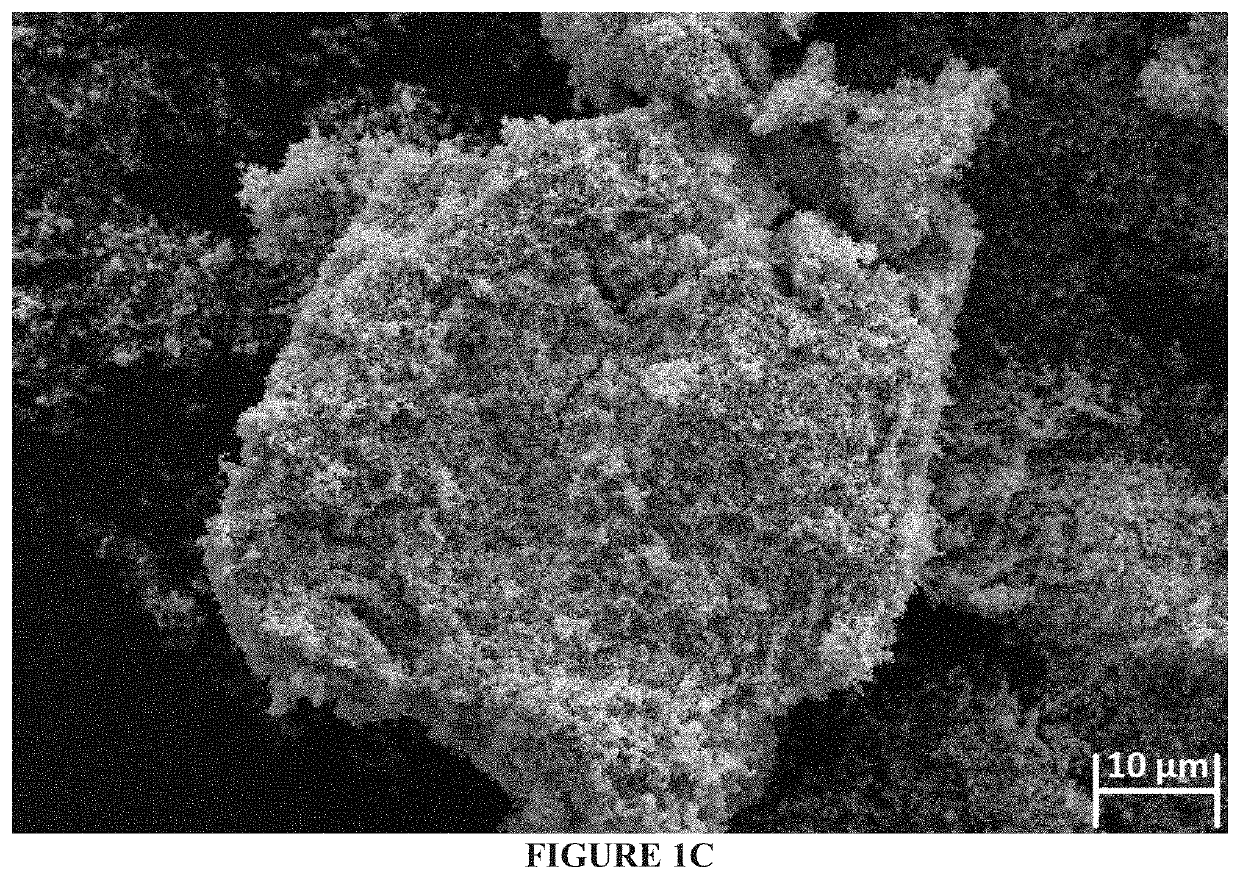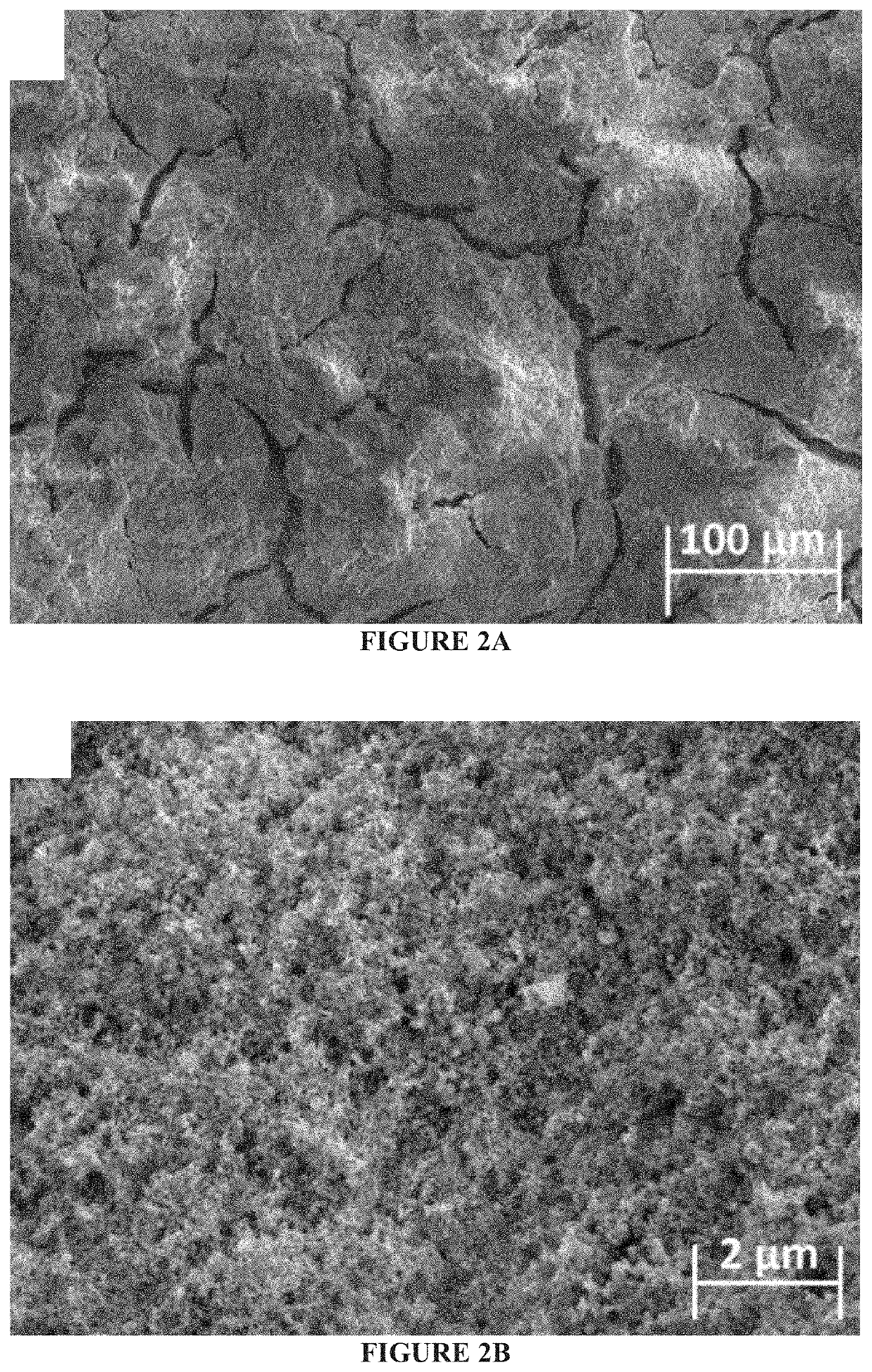Hydroxyapatite based composites and films thereof
a technology of hydroxyapatite and composites, applied in the field of composites and films, can solve the problems of high wear, poor fracture toughness, and brittleness of the material, and achieve the effect of improving mechanical and thermal properties
- Summary
- Abstract
- Description
- Claims
- Application Information
AI Technical Summary
Benefits of technology
Problems solved by technology
Method used
Image
Examples
example 1
Preparation of a Film of Hydroxyapatite (HA) and Rhenium Doped Fullerene Like MoS2 (Re:IF-MoS2) on Titanium Substrate
[0098]A titanium electrode (30×5×0.3 mm, 97 wt % purity) was polished with silicon carbide paper to a mirror finish. It was subsequently cleaned by sonicating in a series of solvents, i.e., acetone, ethanol, methanol, isopropanol and finally distilled water, then dried under a nitrogen stream.
[0099]The surface morphology of the titanium before the pretreatment preceding the anodization is presented in FIGS. 11A-11B. Visibly, the fresh surface was heavily contaminated with a dense network of scratches. After treatment of the titanium with different solvents, a smooth surface with low density of scratches and clean from contaminants was obtained (FIGS. 11C-11D). The smooth surface was imperative for achieving reproducible tribological measurements.
Titanium Anodization
[0100]An electrochemical cell containing two-electrodes, i.e., platinum (cathode) and titanium (anode) w...
example 2
Zeta Potential Results of Hydroxyapatite (HA) and Rhenium Doped Fullerene Like MoS2 (Re:IF-MoS2) Film on Titanium Substrate
[0114]The surface charge of the HA suspension with and without the nanoparticles was determined by zeta potential (ZP) measurements using ZetaSizer Nano ZS (Malvern Instruments Inc., Malvern, UK) with a He—Ne light source (632 nm). To prepare the samples for these measurements, IF (0.6 mg) NP were deagglomerated in 20 mL purified water by sonicating for 5-10 minutes using an ultrasonic bath (see FIG. 1C for a SEM image of such an agglomerate). Subsequently, 0.2 mL of the IF suspension was added to 1.5 mL aqueous solutions with pH varying from 1 to 12 and sonicated for an extra 5 min. Before the addition of the IF NP, the pH of each solution was adjusted using concentrated NaOH or HCl. The final concentration of the IF NP was 0.004 mg / mL. The ZP of the solutions was measured in a folded capillary cell (DTS1060) made from polycarbonate with gold plated beryllium / c...
example 3
X-Ray Diffraction (XRD) of Hydroxyapatite (HA) and Rhenium Doped Fullerene Like MoS2 (Re:IF-MoS2) Film
[0117]The film was removed from the Ti substrate and carefully crushed into a powder. The powder was analyzed by X-ray powder diffraction (XRD) using TTRAX III (Rigaku, Tokyo, Japan) theta-theta diffractometer equipped with a rotating copper anode X-ray tube operating at 50 kV / 200 mA. A scintillation detector aligned at the diffracted beam was used after a bent Graphite monochromator. The samples were scanned in specular diffraction mode (θ / 2θ scans) from 10 to 80 degrees (2θ) with step size of 0.025 degrees and scan rate of 0.5 degree per minute. Phase identification and quantitative analysis were performed using the Jade 2010 software (MDI) and PDF-4+ (2016) database.
[0118]The results of the XRD analyses are summarized in FIGS. 5A-5B and in Table 1. The XRD patterns of the different coatings obtained from solutions A, B and Care shown in FIG. 5A. The major phase obtained by EPD of...
PUM
| Property | Measurement | Unit |
|---|---|---|
| size | aaaaa | aaaaa |
| size | aaaaa | aaaaa |
| diameter | aaaaa | aaaaa |
Abstract
Description
Claims
Application Information
 Login to View More
Login to View More - R&D
- Intellectual Property
- Life Sciences
- Materials
- Tech Scout
- Unparalleled Data Quality
- Higher Quality Content
- 60% Fewer Hallucinations
Browse by: Latest US Patents, China's latest patents, Technical Efficacy Thesaurus, Application Domain, Technology Topic, Popular Technical Reports.
© 2025 PatSnap. All rights reserved.Legal|Privacy policy|Modern Slavery Act Transparency Statement|Sitemap|About US| Contact US: help@patsnap.com



